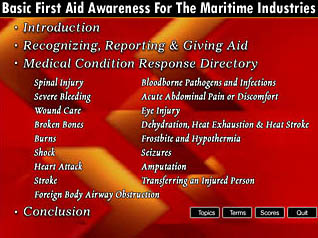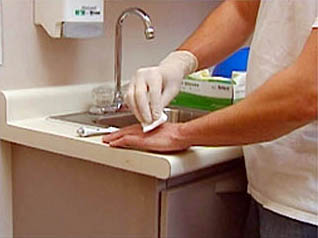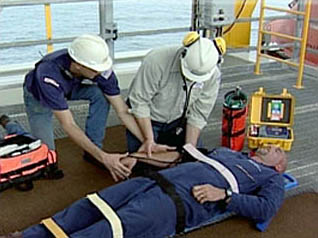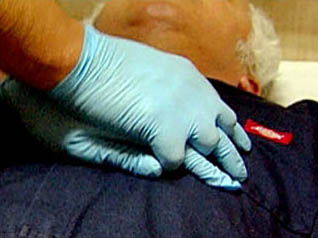Maritime: Basic First Aid Awareness Maritime Industries

- Product ID
- moxibfai
- Training Time ?
- 66 to 132 minutes
- Language(s)
- English
- Video Format
- Standard Definition
- Required Plugins
- MasteryNet Player
- Lesson Interactions
- 22
- Quiz Questions
- 50
- Closed Captioning



This informative training program provides mariners with first aid knowledge and awareness, which are both needed when encountering an accident or other medical emergency. Video for this interactive program was shot on location aboard vessels and emphasizes typical first aid for injuries and illnesses of a workboat environment. This training is perfect for those needing to fulfill their compliance with the American Waterways Operators (AWO), Responsible Carrier Program (RCP), First Aid, and CPR Awareness training requirements. This training is an excellent resource to complement Basic Safety Training and other online osha training. Topics in this course are the same topics found in the Standards of Training, Certification and Watchkeeping (STCW)'s Basic Safety Training (BST) "Elements of First Aid" required training. The web based safety training course can also be used onboard as a crew refresher or source of first aid information.
![]() This course is in the Advantage™ format, to read about Advantage™ features click here.
This course is in the Advantage™ format, to read about Advantage™ features click here.

- Install on any SCORM LMS
- Rich multimedia presentation with interactions and quiz
- Print certificate and wallet card
- You have 30 days to complete the course
All workers in the Maritime industry.
-
Introduction
- Four P's of First Aid
- Response time
- First responders
-
Recognizing, Reporting and Giving Aid
- When to call for help
- Signs of a possible medical emergency
- ABC's
- CPR
-
Spinal Injury
- Spinal injury
- Moving a person with a spinal injury
-
Severe Bleeding
- Arterial bleeding
- Treatment of severe bleeding
-
Wound Care
- Treatment of small wounds
-
Broken Bones
- Treatment of broken bones
- Treatment of punctured skin from bone
-
Burns
- First degree burns
- Chemical burns
- Serious burns
-
Shock
- Shock
- Treating a person for shock
-
Heart Attack
- Heart attack
- Symptoms of a heart attack
- Treatment for a heart attack
-
Stroke
- Cause of a stroke
- Symptoms of a stroke
- Treatment of a stroke
-
Foreign Body Airway Obstruction
- Partially obstructed airway
- Complete airway obstruction
- Heimlich maneuver
-
Bloodborne Pathogens and Infections
- Bloodborne pathogens
- Protection against bloodborne pathogens
-
Acute Abdominal Pain or Discomfort
- Causes for abdominal pain
-
Eye Injury
- Something in your eye
- Chemical in the eye
- Eye lid puncture
-
Dehydration, Heat Exhaustion and Heat Stroke
- Heat stroke prevention
- Symptoms of heat stroke
- First Aid for heat exhaustion
-
Frostbite and Hypothermia
- Symptoms of frostbite
- Severe hypothermia
- Caffeine and hypothermia
-
Seizures
- Stopping seizures
-
Amputation
- Treating amputations
- Preserving an amputated finger or toe
-
Transferring an Injured Person
- Transporting victim with spinal injury
- Ways to transport a victim
-
Recognize the importance of First Aid training.
- List the four P's of First Aid.
- Explain the importance of the response time to an emergency.
- Recognize probable first responders to an emergency at work.
-
Recognize the importance of reporting and giving aid during emergencies.
- Recognize when you should call for help.
- Choose the signs of a possible medical emergency.
- Define the ABC's used to check vital signs.
- Define CPR.
-
Provide initial treatment to someone with a spinal injury.
- Discuss what to do in cases of a spinal injury.
- Explain how to move a person with a spinal injury.
-
Treat a person with a severe bleeding.
- Recognize arterial bleeding.
- Explain how to treat a victim with severe bleeding.
-
Treat a small wound.
- Identify the treatment of small wounds.
-
Help someone with a broken bone.
- List the initial treatment of someone with a broken bone.
- Explain how to treat bleeding of skin punctured with a bone.
-
Treat different degrees of burns.
- Identify first degree burns.
- Discuss treatment of various types of burns.
-
Help someone in shock.
- Recognize that an allergy to bee stings can send someone into shock.
- Select the symptoms of shock.
- List the steps in treating a person for shock.
-
Recognize symptoms of a heart attack.
- Define a heart attack.
- List the symptoms of a heart attack.
- Explain the initial treatment for a heart attack.
-
Help stroke victims.
- Recall the cause of a stroke.
- Recognize symptoms of a stroke.
- Explain the treatment for a stroke.
-
Provide first aid for choking victims.
- Define a partially obstructed airway.
- Define complete airway obstruction.
- Explain the procedure to use when performing the Heimlich maneuver.
-
Prevent bloodborne pathogens from entering your body.
- Define bloodborne pathogens.
- List methods of protection against bloodborne pathogens.
-
Know what to do for abdominal pain or discomfort.
- List causes for abdominal pain.
- Agree to treat prolonged abdominal pain as an emergency.
-
Properly treat eye injuries.
- Identify actions to be taken if you have something in your eye.
- Explain procedure for cleaning out chemicals in the eye.
- Discuss what to do in case the eye lid is punctured.
-
Avoid dehydration, heat exhaustion and heat stroke.
- List ways to prevent heat stroke.
- Recognize symptoms of heat stroke.
- Discuss first aid for heat exhaustion.
-
Understand symptoms and treatment for frostbite and hypothermia.
- Identify symptoms of frostbite.
- List symptoms of severe hypothermia.
- Recognize the danger of giving a hypothermia victim hot liquids.
-
Know what to do during a seizure.
- Recognize proper actions to take during a seizure.
-
Apply basic first aid treatment to an amputation.
- Discuss methods to preserve an amputated finger or toe.
-
Safely transfer an injured person.
- List ways to transport victim with spinal injury.
- Choose ways to transport a victim with various injuries.
© Mastery Technologies, Inc.



